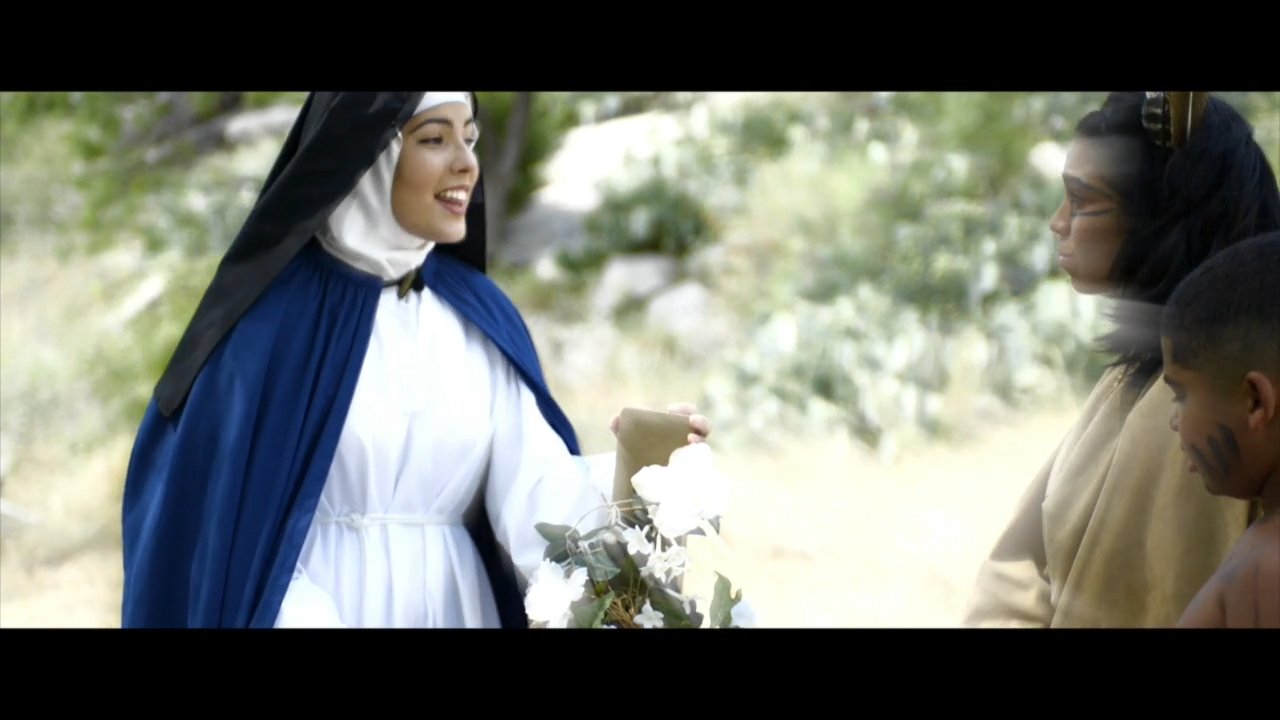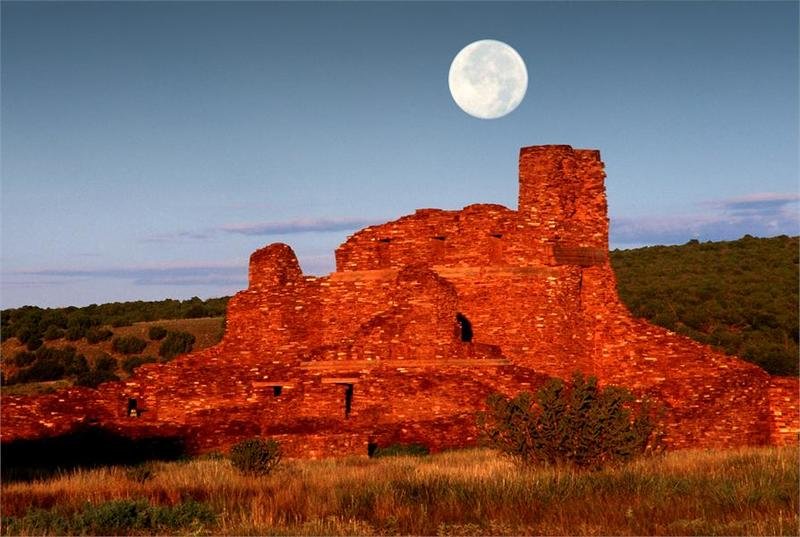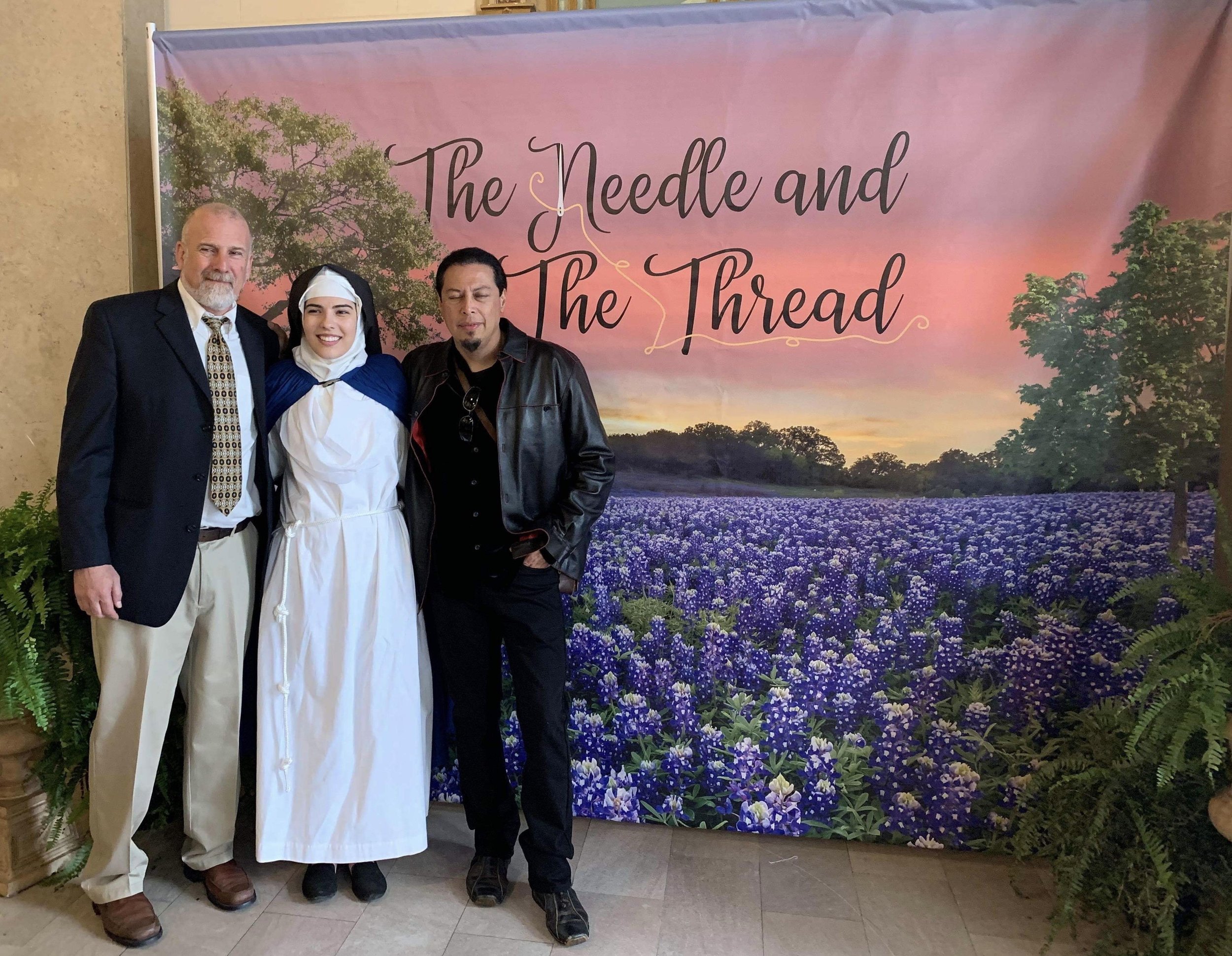The Needle and the Thread
Victor Mancilla and Jim Nikas on their forthcoming film about the Jumano-Apache people and 17th-century Franciscan nun Sor María de Ágreda
In the modern world of today, things happen ever so rapidly and, increasingly, in a digital metaverse. In such a world as we find ourselves, the history of the Jumano-Apache people of the Southwestern United States, together with their systems of belief and faith, can serve as a reminder that not all things can be explained with such immediacy.
To this day, the Jumanos hold the story of María de Jesús de Ágreda’s (Sor María) in great reverence, viewing her presence as a profound part of their history. At the same time, within Sor María’s narrative is an offering of pause for reflection on the true meaning of belief and faith in religion.
The Film
The Needle and the Thread (Eravision Films, 2022) tells the remarkable story of Sister María Fernández Coronel y Arana (1602-1665) of Ágreda, an extraordinary Spanish nun of the Franciscan Conceptionist Order. Known as the Lady in Blue [La Dama Azul], she was a mystic, advisor to the King of Spain, best-selling author, founder of a religious order, and the first woman to successfully evangelize in the New World.
The occasion of appearing in two places at once is called bilocation and, although scientifically unsubstantiated, the mystery of Sor María remains to the Jumano in what are now New Mexico and Texas a sacred part of their history.
But how did Sor María de Ágreda evangelize to the Jumano peoples in their own language, without leaving Spain? Is it possible to be in two places at once? According to the reported history, while thousands of miles away in Ágreda, Spain, and in deep prayer, she purportedly levitated in an aura of blue light. It was during these times that she claimed to have been transported with the help of angels to the Jumanos settlements. There were numerous reported visits occurring most frequently for approximately three years beginning in 1620 and, according to substantiated reports, all of the visits occurred while the nun physically remained in the convent located in Ágreda, Spain.
Centuries before, the Jumano’s ancestors requested missionaries to come baptize them. Prior to responding, the Catholic overseer of the region, Father Alonzo de Benavides, inquired as to why the Jumanos wanted to be baptized. They responded to his inquiry by relating that they had been visited by a Lady in Blue who had told them to turn to the Church. In response, Father Benavides sent Franciscan Friar Juan de Salas to visit them in 1629. Father Salas found little difference in the accounts that had been reported. The Jumanos indicated that the Lady in Blue had visited them in the area now known as the Salinas National Monument, near Albuquerque, New Mexico.
In June of 2014, a pilgrimage of the faithful Jumanos took place to honor the Lady in Blue. The doctors of a young girl on the pilgrimage, reputed to be suffering from cancer, later reported that she has no cancer. Could it be simply a medical error? A miracle? A healing by faith?
Examinations of Sister María de Jesús de Ágreda’s body contained in her casket at the monastery where she had lived in the 17th century reportedly show that the state of the body showed no signs of rot and decay after death. Could this represent the condition defined as incorruptible?
These questions and others, together with seemingly miraculous events, fascinated local historian Dr. Henry J. Casso, who contacted documentary filmmaker/director Victor Mancilla in 2014. Dr. Casso invited Mr. Mancilla to explore and record the story of the Lady in Blue.
The Needle and the Thread was co-written, directed, and produced by Mancilla, narrated by co-writer Jim Nikas, with Christian Hernandez serving as Director of Photography; the late Tilly Chandler was instrumental in gathering community support as an Associate Producer. The 70-minute documentary feature film was shot in Italy, Mexico, Spain, and the United States—in many ways reflective of Sor María’s multifold presence. The cast includes real-life members of the clergy: Deacon Freddy Medina plays Friar Juan de Salas, and Father Adrian Wilde plays Padre Benavides.
“The power of faith has healed many people,” says Dr. Casso. “And this story, much like a great tapestry, will emerge stitched together with needle and thread for the Jumanos and others to judge, to believe or not believe.”
While it may be easy to dismiss the claim of bilocation, 400 years of belief and faith are another story.
The Mysterious Lady in Blue
This section, written by wine columnist Gus Clemens, is a reprint of “The Mysterious Lady in Blue,” originally published in Authentic Texas Magazine (Winter 2018), Texas Heritage Trails LLC.
In 1629, walking across the barren Southwest desert of Texas and New Mexico, approximately 12 Jumano Indian capitanes arrived at Isleta, N.M., carrying a cross covered in wildflowers. Their steps were hesitant and silent as they approached the mission. The Indians had made this long and torturous journey from their homeland six times. All six had failed.
For this trip, however, their beloved “Lady in Blue” had assured them that brown-robed Franciscan padres had arrived from Spain through Mexico, and she directed the Indians to ask the padres to come to their main camping ground and baptize their people.
The sight of the Indians carrying a Christian cross and requesting baptism astounded the Franciscans…perhaps even frightened them. Had the French “beaten” them to the Southwest? If not the French, then who’d catechized these Indians?
The Jumanos insisted they’d never seen a white man, and that their knowledge was taught to their tribe by the beautiful, young lady wearing a brilliant blue cape. When the Jumanos led the Spanish priests to one of their central camping grounds, they arrived at the Concho River confluence area at presentday San Angelo. Over 2,000 Jumanos were baptized in the first weeks.
"Maria - Lady in Blue" bronze statue by Vic Payne for the San Angelo, TX Commission. Unveiled in 2018, the statue is located in Bart DeWitt Park along the Concho River in downtown San Angelo, Texas.
Photo: Jonathan Cutrer
Thus, San Angelo’s place in Texas history is secure as the site of the first missionary effort in the state — more than 45 years before El Paso, more than 80 years before San Antonio. In the early 1600s, this mysterious woman, dressed in a flowing blue cape, tended to the sick, comforted the afflicted and, most importantly, taught indigenous people about Jesus.
One missionary, Fra Alonzo de Benavides, knew of a young cloistered nun in the Spanish village of Agreda, north of Madrid. Sor María de Jesús de Agreda reportedly lapsed into deep trances while in prayer and described visits to the New World, where she taught the natives. She told visitors she made more than 500 such spiritual visits, though she in fact never left her monastery in Agreda, Spain, during her lifetime.
Upon returning to Spain, Fra Alonzo questioned Sor Maria at length and was amazed at her detailed descriptions of the lands she’d never seen in person. He was also astonished to learn that she wore a sky-blue cape when she went outdoors.
When Fra Alonzo asked Sor Maria where she learned to speak the Jumano languages, she reportedly replied, “I didn’t. I simply spoke to them — and God let us understand one another.” The appearances ceased after Fra Alonzo told Sor Maria of his contacts with the Jumanos. Sor Maria then said, “My work with my beloved Jumanos is finished.”
Sister Maria died in 1665, and her incorrupt body can still be viewed at the convent where she lived and from where she “journeyed” to the Americas.
Jumano tradition relates that as Sor Maria was leaving on her final visit, wherever her blue cape touched the ground, bluebonnets sprang up to forever grace the Texas countryside.
Sor María’s Legacy
In addition to her relationship with the Jumano, Sor María’s legacy is, in part, reflected in the fourteen books she authored. Her signature work: the once-banned, mammoth Mystical City of God, a biography of Mary (mother of Jesus) [Mística ciudad de Dios, Vida de la Virgen María], published in 1722. In its two-thousand-plus pages, Sor María details apparitions and conversations imparted to her by the Blessed Mother Mary. The book has been translated into over ten languages and is studied today in college and university programs of Spanish language and culture. Mystical City of God is said to have been the only other book besides the Bible that Saint Junipero Serra brought with him from Spain to the New World, helping to inspire his evangelical work in the Missions of California. Sor María, may have converted more people to Christianity, perhaps more than any other woman in her time.
Over 600 letters exist between her and King Philip IV of Spain, whom she advised spiritually for 22 years. The letters show a unique relationship between the two and may have helped save her from the Inquisition; her persecution is believed to have been a result of jealousy, as the spirituality and gifts attributed to Sor María were likely viewed as threatening to those in power in her time.
Times have changed, and there is now renewed interest in seeking her beatification. As testimony to the significance of her story, The Needle and the Thread was granted a rare Pontifical Approval from the Catholic Church.
READ MORE
Kessell, John L. “María de Ágreda and the End of Ortega” in “The "Christianization of Pecos, 1617-1659” [Chapter IV]. Kiva, Cross, and Crown: The Pecos Indians and New Mexico, 1540-1840. Washington, D.C.: National Park Service, U.S. Department of the Interior, 1929.
















